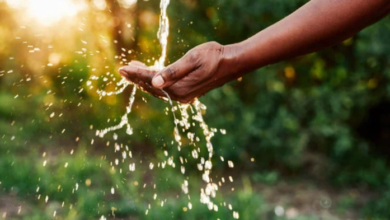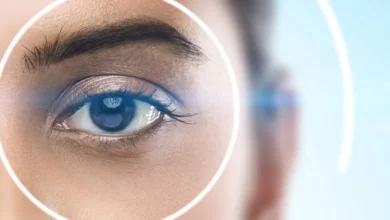How Long Does It Take Mushroom Leather to Biodegrade?

As industries increasingly shift toward sustainable materials, mushroom leather has emerged as a promising innovation. This plant-based material, also known as mycelium leather, offers an eco-friendly alternative to traditional animal hides and synthetic fabrics. It is praised for its lower environmental footprint, cruelty-free production, and impressive aesthetic appeal. But one of the most compelling aspects of mushroom leather is its biodegradability. Unlike synthetic leather alternatives that can take centuries to break down, mushroom leather decomposes naturally and quickly, making it a frontrunner in the race toward sustainable fashion and design. This article explores how long mushroom leather takes to biodegrade and what factors influence its decomposition, particularly in the context of biodegradable leather.
What Is Mushroom Leather Made Of?
Mushroom leather is derived from the root structure of fungi called mycelium. Mycelium is a fast-growing network of fungal threads that thrives in organic material like sawdust or agricultural waste. When cultivated under controlled conditions, it forms a dense mat that resembles animal hide in texture and structure. This mat is then processed, dried, and treated to create a durable yet flexible material suitable for use in apparel, footwear, bags, and upholstery. Because the base ingredient comes from fungi and agricultural by-products, mushroom leather is naturally compostable and aligns well with the goals of biodegradable leather.
Why Biodegradability Matters in Leather Alternatives
The textile and leather industries are among the most resource-intensive sectors in the world. Conventional leather production involves tanning processes using harmful chemicals like chromium salts, which render the leather nonbiodegradable. Similarly, synthetic leather is typically made from petroleum-based plastics such as polyurethane or PVC, which can persist in the environment for hundreds of years. These materials contribute significantly to landfill waste and pollution. Biodegradable leather options like mushroom leather, however, decompose naturally and return to the soil without leaving harmful residues. This shift toward environmentally responsible materials is essential for reducing global waste and promoting circular economies.
The Biodegradation Timeline of Mushroom Leather
One of the key benefits of mushroom leather is its rapid biodegradation. Under optimal composting conditions, untreated mushroom leather can break down in as little as 30 to 60 days. This timeframe is significantly shorter than animal leather, which can take 25 to 40 years to decompose if chrome-tanned, or synthetic leather, which may remain intact for centuries. However, the actual rate of decomposition can vary depending on environmental factors such as temperature, humidity, microbial activity, and the presence of oxygen. In home composting systems, where these conditions are relatively controlled, mushroom leather breaks down much faster than most other leather alternatives.
See also: Avoiding Design Fatigue with Joe Kiani: Why Patients Stop Using Health Tools and How to Fix It
How Finishing and Treatment Affect Decomposition
Not all mushroom leather products biodegrade at the same speed. The finishing treatments applied during manufacturing can significantly influence how fast or slow the material breaks down. For instance, some manufacturers use natural waxes, oils, or plant-based coatings to enhance water resistance and durability without compromising the material’s compostability. These products still qualify as biodegradable leather. However, if synthetic polymers or chemical sealants are added to mimic the look and feel of animal leather more closely, the material’s ability to decompose can be reduced or delayed. Therefore, consumers interested in eco-friendly products should check whether the mushroom leather they purchase is fully biodegradable and free from synthetic finishes.
Disposal Conditions Matter
The environment in which mushroom leather is discarded plays a crucial role in determining its degradation timeline. If disposed of in a commercial composting facility, where conditions are optimized for organic breakdown, mushroom leather can fully biodegrade in a few weeks. In contrast, if it ends up in a landfill with limited oxygen and microbial activity, the process can take much longer. In fact, any biodegradable leather material will decompose slowly in anaerobic landfill environments due to the lack of biological activity required to facilitate decomposition. This underscores the importance of proper disposal practices and consumer awareness about composting options.
Mushroom Leather vs Other Biodegradable Materials
Mushroom leather is not the only material marketed as biodegradable leather, but it is one of the most promising in terms of rapid decomposition and low environmental impact. For comparison, vegetable-tanned animal leather can take several months to years to break down, depending on its thickness and finishing. Other plant-based leathers made from pineapple leaves (Piñatex), apple peels, or cactus fibers also offer biodegradable properties, but their breakdown rates vary depending on additives and processing. What sets mushroom leather apart is its minimal need for water, chemicals, or animal inputs, along with its naturally compostable structure that decomposes efficiently in the right conditions.
Applications of Mushroom Leather in Industry
As a biodegradable leather alternative, mushroom leather is gaining traction in industries that prioritize sustainability. Fashion brands are incorporating it into shoes, wallets, handbags, and outerwear. Furniture designers are exploring its use for upholstery due to its supple texture and customizability. Automotive manufacturers are also eyeing this material for use in car interiors to reduce their carbon footprint. Since mushroom leather is not only eco-friendly but also biodegradable within a matter of weeks or months, it fits perfectly into modern sustainability goals and life-cycle thinking. Its success highlights a growing trend toward biodegradable solutions that do not compromise on quality or design.
Consumer and Manufacturer Responsibility
For mushroom leather to reach its full sustainability potential, both manufacturers and consumers have roles to play. Manufacturers must ensure they avoid synthetic additives and maintain transparency in the sourcing and processing of materials. Consumers, on the other hand, should be informed about how to dispose of mushroom leather products responsibly. Composting is the best option for ensuring the material breaks down quickly and safely. Additionally, brands should provide clear labeling and disposal instructions to help users make environmentally responsible decisions. Promoting education around biodegradable leather and proper waste management will ensure that materials like mushroom leather achieve their intended environmental benefits.
Final Thoughts on the Biodegradability of Mushroom Leather
To summarize, mushroom leather is one of the most biodegradable leather alternatives currently available. In optimal conditions, it can decompose within 30 to 60 days, making it far superior to both traditional animal leather and plastic-based synthetics in terms of environmental impact. However, the speed of biodegradation depends on how the material is treated and where it is disposed. As awareness of ecological responsibility grows, the demand for truly biodegradable materials like mushroom leather will continue to rise. By supporting these innovations and adopting responsible consumption habits, individuals and industries alike can contribute to a cleaner, more sustainable planet.



